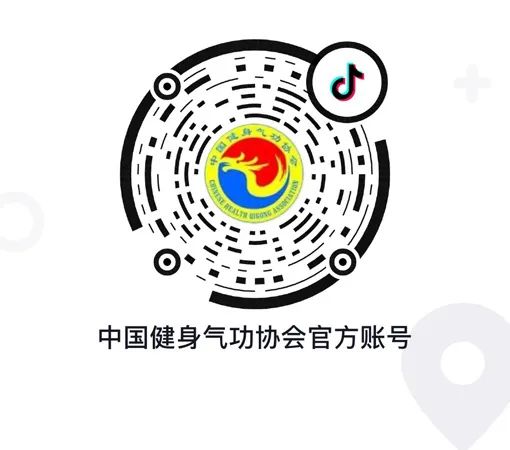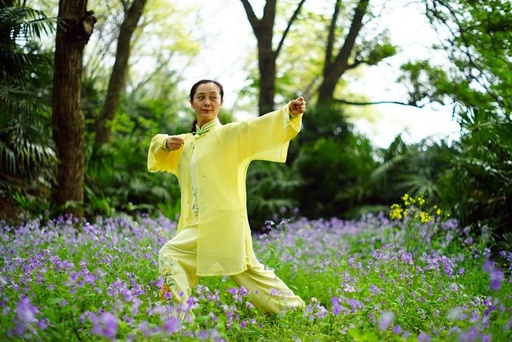Traditional Chinese Medicine (TCM) believes that the Twelve Methods of Fitness Qigong and Health Preservation integrate guidance with health maintenance, physical exercise with mental cultivation, and possess the effects of disease prevention, body strengthening, and longevity. This article aims to interpret the Twelve Methods of Fitness Qigong (standing style) and their fitness effects using the foundational theories of TCM.
Preparation Posture
This posture helps to focus the mind and mobilize internal Qi.
Stand with feet together, relaxing the entire body. The Suwen states: “Calm and empty, true Qi follows,” thus relaxation is beneficial for the normal and orderly rise, fall, entry, and exit of Qi within the body, creating a stable internal environment for Qi.
Gently close the eyes or gaze straight ahead, avoiding distractions to help concentrate the mind. The tongue touches the upper palate, and the upper and lower teeth come together, connecting the Ren (Conception) and Du (Governing) meridians, facilitating better circulation of internal Qi. Silently recite the practice mantra, aiming for “calmness and cessation of distracting thoughts,” creating a tranquil space for oneself to merge into the practice state. Placing both hands over the Dantian (elixir field) helps to draw the mind and Qi back to the Dantian, preventing dispersion and allowing for quicker entry into the practice state.
First Posture: Qian Yuan Qi Yun
This posture promotes the generation of liver Qi, absorbs kidney Qi, and unblocks the upper limb meridians.
As you inhale, contract the perineum and abdomen. Contracting the perineum refers to closing the lower orifices to prevent the leakage of true Qi, serving as a rejuvenation technique that can delay aging and allow the breath to descend to the lower jiao (lower abdomen) and enter the kidneys. TCM holds that “the kidneys are the root of Qi,” and “the kidneys govern the reception of Qi.” This method aids in treating kidney deficiency leading to shortness of breath. The Suwen states: “The liver is born on the left.” As the arms rise, look at the left palm, which can mobilize the Qi of the lower jiao, rising from the left to nourish water and support wood.
Internally rotating the arms can enhance stimulation to the nerves, bones, muscles, and joints. TCM theory suggests that regularly rotating the arms can strengthen the stimulation of the five transport points on the hand meridians, thus facilitating the flow of Qi in the Heart Meridian, Pericardium Meridian, Lung Meridian, and their corresponding Small Intestine Meridian, Triple Burner Meridian, and Large Intestine Meridian, contributing to strengthening the heart, benefiting the lungs, moistening the intestines, and regulating the Triple Burner. Focusing on the Dantian helps to activate the Qi mechanism within, eliminate distractions, purify the mind, and also aids in tonifying Qi and strengthening the body’s resistance.
Second Posture: Shuang Yu Xuan Ge
This posture strengthens the waist and kidneys, and benefits lung Qi.
The Suwen states: “The waist is the residence of the kidneys.” TCM theory holds that the physiological functions of the kidneys are to store essence, govern bones, and produce marrow, being the foundation of congenital vitality and the source of growth and development. This posture uses the waist as an axis to rotate the body, which can strengthen the waist and kidneys, thereby enhancing bodily functions.
Internal and external rotation of the arms can stimulate acupoints in the hands, affecting the Qi of the Lung Meridian, Pericardium Meridian, Large Intestine Meridian, Heart Meridian, Triple Burner Meridian, and Small Intestine Meridian, providing certain stimulation to the respiratory, digestive, and circulatory systems, yielding good therapeutic effects. Taiyuan (Taiyuan Point) is the source point of the Hand Taiyin Lung Meridian, and TCM theory holds that source points are the original driving force of life activities, fundamental for maintaining normal physiological functions of the twelve meridians. Stimulating the Taiyuan Point can enhance the flow of Qi in the Lung Meridian, helping to prevent and treat lung diseases.
Third Posture: Lao Ji Fu Li
This posture benefits the heart and lungs, and clears the heart while lowering fire.
In this posture, pressing the Zhongchong (Central Surge) point with the fist can achieve the effect of “using fingers as needles” to stimulate acupoints. Traditional Chinese medicine considers Zhongchong and Laogong (Labor Palace) to be acupoints on the Pericardium Meridian, which treats diseases of the heart, pericardium, chest, stomach, and mental disorders, as well as other conditions along the meridian pathways. Laogong belongs to the fire element, thus stimulating Zhongchong can help clear the heart and lower fire, benefiting heart function and providing relief for hypertension and coronary heart disease. The actions of bending the wrist into a hook and overlapping the wrists, along with curling the fingers, provide a massage effect on Taiyuan, Daling, and Shenmen, yielding good therapeutic effects for heart and lung diseases.
The Hand Taiyin Meridian and Hand Yangming Meridian are interrelated, connecting at Shaoshang and Shangyang, facilitating better communication of Qi between the two meridians, thus accelerating metabolism, dilating blood vessels, and enhancing blood circulation, which can prevent and treat diseases of the circulatory and respiratory systems.
Fourth Posture: Ji Chang Guan Shi
This posture expands the chest, regulates Qi, connects the heart and kidneys, and awakens the spirit.
This posture of drawing a bow and shooting an arrow helps to open the chest and smooth Qi, harmonizing the heart and lungs, and fully utilizing the function of “the lungs govern the Qi of the body.” When the Zong Qi (ancestral Qi) in the chest is abundant, the Qi of the entire body rises and falls harmoniously, and the Qi transformation activities of the organs become vigorous, leading to a favorable overall functional state.
TCM holds that the Foot Shaoyin Kidney Meridian begins at the Yongquan (Gushing Spring) point on the sole and ends at the Yufu (Yuan) point. The Yongquan point, being a well point, has a unique anatomical position compared to other well points, serving as the junction of the Heart and Kidney meridians. Therefore, pressing and rotating the Yongquan point aims to activate the source of the Kidney Meridian, stimulate its Qi, nourish Yin, tonify the kidneys, and strengthen the waist. The kidneys govern bones and produce marrow; when the brain is nourished by marrow, thinking becomes clear and responses become agile.
Additionally, Yongquan is an acupoint for awakening the spirit and connecting the heart and kidneys. Excessive fire can extinguish the source, while deficient fire can strengthen water to control fire; thus, this point is often used to treat diseases related to the heart, kidneys, lungs, brain, and other conditions along the meridian pathways.
Fifth Posture: Gong Shen Dan Xue
This posture unblocks the Du Meridian and warms and tonifies kidney Yang.
This posture primarily involves bending forward, affecting the waist and the Du Meridian associated with the kidneys. TCM meridian theory states that the Du Meridian is one of the eight extraordinary meridians. It begins in the lower abdomen, exits at the perineum, runs along the midline of the back, ascends along the spine, passes through the neck to the Fengfu (Wind Palace) point, enters the brain, and then returns upward to the head, along the midline of the head, forehead, nose, upper lip, and ends at the frenulum. The Du Meridian governs all Yang Qi in the body, overseeing all Yang meridians, and intersects with six Yang meridians at the Dazhui (Great Vertebra) point, thus regulating the Qi and blood of the Yang meridians, hence it is called the “sea of Yang meridians,” overseeing the Qi and blood of all Yang meridians. The Du Meridian governs reproductive functions, especially male reproductive functions. Bending forward stimulates the spine and Du Meridian, regulating the Qi and blood of all Yang meridians, while also nourishing kidney Yin, warming kidney Yang, receiving Qi back to the kidneys, strengthening the waist, and enhancing brain function and intelligence.
Sixth Posture: Xi Niu Wang Yue
This posture unblocks the neck and lumbar meridians and smooths the Triple Burner.
This posture, through the twisting motion of the neck, can unblock the neck meridians, allowing clear Yang to rise and nourish the brain, thus achieving a refreshing effect and preventing cervical spondylosis. Using the waist to drive the arms in rotation not only strengthens the waist but also stretches the meridians on both sides of the body, massaging the five internal organs and enhancing balance, while keeping the spine and joints flexible. Simultaneously, the rotation of the arms can smooth the hand’s three Yin and three Yang meridians, helping to strengthen the heart, benefit the lungs, regulate the Triple Burner, and moisten the intestines.
Seventh Posture: Fu Rong Chu Shui
This posture strengthens the waist and knees, and benefits the lungs and kidneys.
TCM theory holds that the kidneys govern the waist and knees. Squatting down into a rooted position can unblock the Foot Three Yin and Foot Three Yang meridians, aiding in harmonizing the stomach, strengthening the spleen, smoothing the liver, benefiting the gallbladder, and tonifying the kidneys. The Ling Shu states: “When the five organs are diseased, one should take the twelve source points.” Bending the wrist can stimulate the source points on the wrist, providing certain therapeutic effects for the recovery of lung and heart diseases. Additionally, coordinating the upward lifting of the palms with the sound of the “xi” can enhance the rise and fall of Qi, aiding in the dispersal and descending of lung Qi.
Eighth Posture: Jin Ji Bao Xiao
This posture regulates the kidneys and smooths the Triple Burner.
This posture involves lifting the heels, pressing the Yongquan point, which helps to activate and stimulate the Qi of the Foot Shaoyin Kidney Meridian, providing benefits for nourishing Yin and tonifying the kidneys. The palms form a hook and lift upward, while pressing down during the transformation of the palms stimulates the hand’s three Yin and three Yang meridians, promoting circulation and nourishing the heart and lungs, while regulating the Triple Burner.
According to TCM theories of Yin-Yang, Five Elements, and organ representations, the six sounds “xu, he, hu, xi, chui, xi” correspond to the liver, heart, spleen, lungs, kidneys, and Triple Burner respectively. Exhaling with a light “chui” sound can release the turbid Qi of the kidneys, regulating kidney function.
Ninth Posture: Ping Sha Luo Yan
This posture connects the heart and kidneys, and calms the heart and spirit.
TCM holds that the Laogong point is located on the Pericardium Meridian, and focusing on Laogong helps to regulate the Qi of the Pericardium Meridian, soothing the heart. Bending and stretching the legs, squatting into a rooted position, helps to unblock the Foot Three Yin and Foot Three Yang meridians, improving the functions of the spleen, stomach, liver, gallbladder, kidneys, and bladder, while the body’s rising and falling can lower the heart Qi, achieving the effect of the heart and kidneys intersecting, harmonizing water and fire.
According to the Essentials of Practicing Zhi Guan Meditation, the “six-character mantra” states that “he corresponds to the heart and chui corresponds to the kidneys…” It is known that the “he” sound corresponds to the heart. Furthermore, the Essential Points for Longevity states: “When the heart is agitated, one must exhale ‘he’; this method is unparalleled for calming the spirit. If there are sores in the throat and heat pain, following this method will bring peace to the mind.” Thus, exhaling the “he” sound can achieve the effect of calming the heart and spirit.
Tenth Posture: Yun Duan Bai He
This posture smooths the Triple Burner, nourishes Yin, and strengthens the spleen and stomach.
Raising the toes and pressing the Yongquan point helps to activate and stimulate the Qi of the Kidney Meridian, providing benefits for nourishing Yin and tonifying the kidneys. Daba (Great Package) belongs to the Foot Taiyin Spleen Meridian, and Hegu (Joining Valley) belongs to the Hand Yangming Large Intestine Meridian. Stimulating Hegu and Daba helps to moisten the intestines and promote digestion. The Nanjing states: “The Triple Burner is the messenger of original Qi.” The Suwen states: “The Triple Burner is the official of drainage, from which the water pathways emerge.” Shaking the wrists and raising the palms helps to activate the Qi of the Hand Shaoyang Triple Burner Meridian, achieving the effects of regulating the Triple Burner and unblocking the water pathways.
TCM theory holds that “well” points are often located at the ends of the hands and feet, symbolizing the source of water, where Qi emerges, thus referred to as “well.” Well points are also where the Hand Three Yin, Hand Three Yang, Foot Three Yin, and Foot Three Yang meridians intersect. The Hand Three Yin ends at the fingertips, the Hand Three Yang begins at the fingertips, the Foot Three Yin begins at the toes, and the Foot Three Yang ends at the toes. The rhythmic activities of overlapping the wrists, curling the fingers, and tapping the nails help to activate and stimulate the Qi of the entire body’s meridians, promoting smooth circulation of Qi and blood, achieving the effect of “where there is flow, there is no pain,” and maintaining the balance of Yin and Yang in the body, thus realizing the goal of “Yin is balanced, Yang is secret, and the spirit is treated.”
Eleventh Posture: Feng Huang Lai Yi
This posture activates true Qi and regulates the functions of the organs.
Turning the body and rotating the arms helps to unblock the Ren and Du meridians, as well as the Hand Three Yin and Hand Three Yang meridians. TCM theory holds that source points are where the original Qi of the organs passes through and is retained; any disease of a specific organ often reflects in its source point. The Suwen states: “When the five organs are diseased, one should take the twelve source points,” indicating the importance of source points in preventing and treating internal organ diseases. The wrists and ankles are where the source points are located; bending the wrist into a hook and stepping forward while flexing the foot, and then relaxing the foot, provides beneficial stimulation to the well and source points of the Hand Three Yin and Hand Three Yang meridians, improving the functions of various organs. Exhaling the “hu” sound releases the turbid Qi of the spleen and stomach, aiding in harmonizing the stomach, strengthening the spleen, and activating true Qi.
Twelfth Posture: Qi Xi Gui Yuan
This posture guides Qi back to the source and nourishes the original Qi.
“Guanyuan” is located above the Ren Meridian, serving as the intersection of the Foot Three Yin Meridian and the Ren Meridian, and is also the Mu point of the Small Intestine. The Guanyuan point is located three inches below the navel, historically known as Xuan Guan. It acts like a valve in the body, retaining the original Qi within and preventing leakage; it is where men store essence and women retain blood, representing the intersection of original Yin and original Yang in the body, and is a crucial point for preserving Qi health. Focusing the mind and guiding Qi back to the Guanyuan helps to tonify the middle Qi, strengthen the original Qi, nourish the organs, and balance Yin and Yang.
Closing Posture
This posture nourishes kidney essence.
The Suwen states: “The five organs transform fluids… the kidneys are the source of saliva.” The commentary by Zhang Zhizhong explains: “The kidney channels ascend to the diaphragm and enter the lungs, following the throat and tongue, reaching the sublingual area, where the fluids are secreted, thus producing saliva.” This refers to the kidney fluids, which, through the Kidney Meridian, reach the sublingual Jinjin and Yuye points, and are secreted out as saliva. Concentrating the spirit and focusing on Jinjin and Yuye, waiting for the mouth to fill with saliva before swallowing, helps to nourish kidney essence.
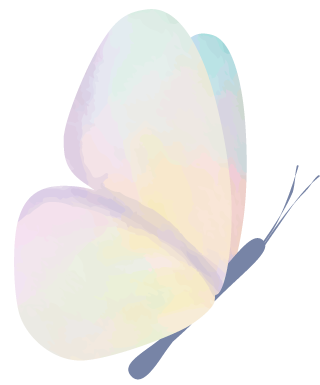
Scan the QR code to follow us
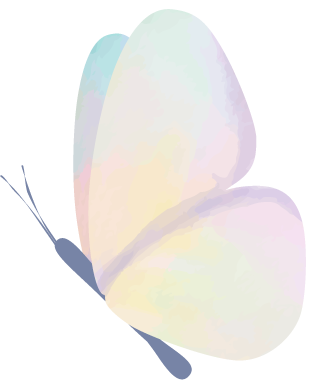
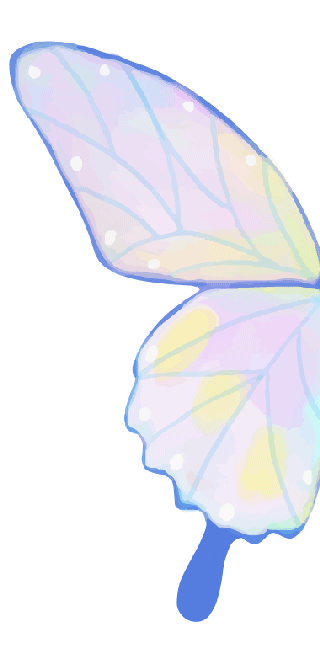
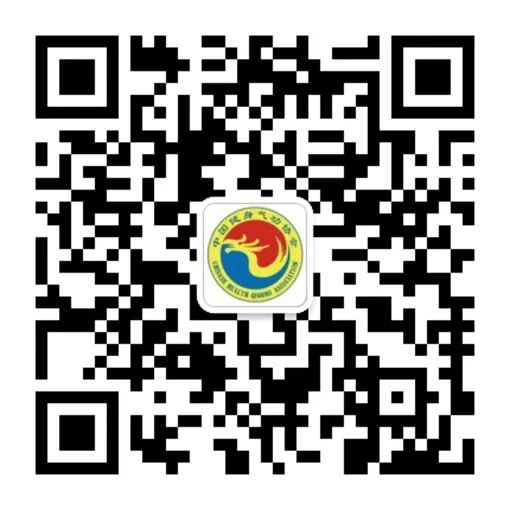

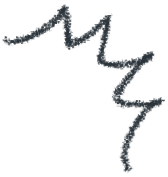
The official Douyin account of the China Fitness Qigong Association (please open Douyin to scan)
